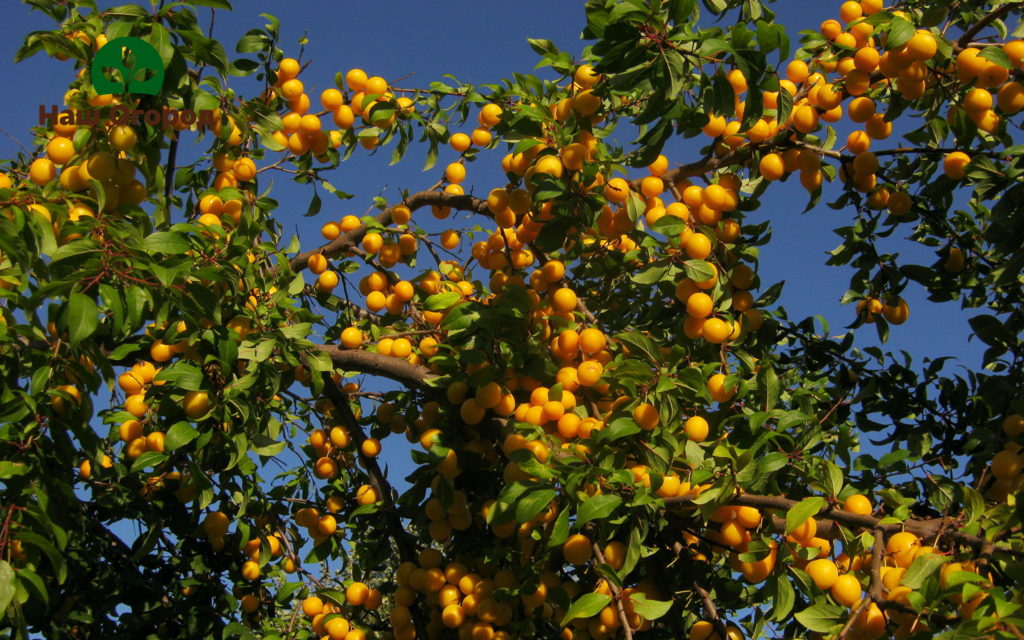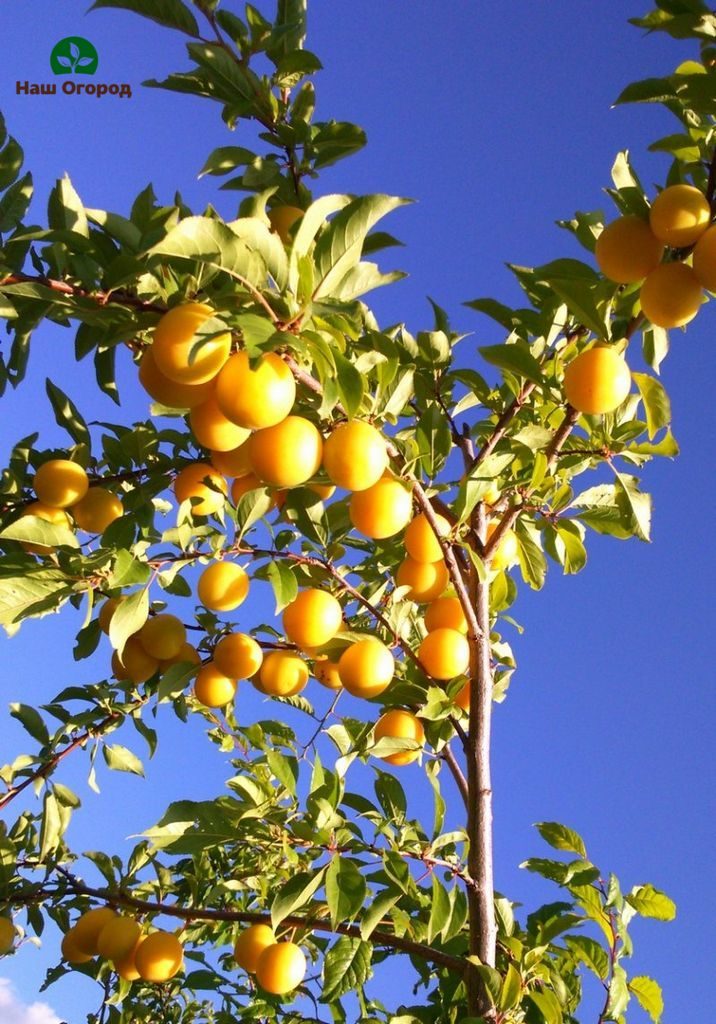Cherry plum, not to be confused with plum!

Cherry plum is easy to confuse with plum.
It is easy to confuse this plant with a plum - although cherry plum is close to it, it still has its own characteristics and differences. The most common for growing among summer residents is large-fruited cherry plum in the garden.
Since it is its fruits that represent the greatest nutritional value and are distinguished by pleasant taste. We will now talk about what this plant represents, what agricultural techniques should be followed in the growing process, as well as other nuances.
As usual, first you need to choose a suitable place for growing this fruit crop. Due to the fact that cherry plum is as thermophilic as plum, places on the slopes should be chosen as far south as possible or in the direction of the southeast.
This is especially true for areas closer to the north, since there are often not the most favorable conditions for growing such plants. An alkaline reaction and high acidity are the main enemies of cherry plum, with which it simply cannot take root in your area.
The pH level in the soil should not exceed the optimal value of 7.5 units, but if it is higher, it is recommended to add additional wood ash or lime at the rate to improve the soil quality for a particular plant. Before you start planting a crop, any soil needs competent preparation.
Acidic soils should be limed based on a ratio of 350 grams of material per square meter. Lime or wood ash (which normally needs from 400 to 500 grams) must be applied immediately into the holes dug for planting cherry plums.
It is recommended to enrich it with potassium and nitrogen in the process of growth and development, as this will only have a beneficial effect and will also contribute to obtaining a high-quality harvest in the end.
It is not recommended to occupy the trunk circles that are under the cherry plum with something superfluous - let them remain clean. Already only in subsequent years, if you see that the cherry plum has taken root, they can be sown with siderates - mustard, lupine, phacelia, and so on. Thanks to this solution, the level of soil fertility will increase, and beneficial microorganisms will begin to multiply in it.
It should be remembered about such an important point as the blooming of cherry plum flowers even before its leaves bloom. The flowering period is quite abundant and intense, however, fruit setting in plantings with one variety is characterized, unfortunately, by a low level of dynamics. This is due to the fact that, for the most part, the varieties of cherry plum are self-fertile.
To improve the overall quality, it is recommended to plant several varieties at once - from 2 to 3 varieties. The cherry plum blossom is characterized as rather short-term and lasts only 8 days, while in the same apple tree, the period can reach two weeks or more.
This point should also be taken into account, because different varieties planted with each other should have time to bloom at the same time and, accordingly, finish together. Avoid desynchronization, which in this case will negatively affect the dynamics of fruit setting.
This is especially true for hybrid varieties, which, in principle, are not recommended for planting alone. Varieties of the Chinese plum are suitable for the role of a pollinator - after all, they, in turn, will be effectively pollinated by the hybrid variety. This way, you can ensure a smooth process without breaking the cycle.

It is recommended to enrich it with potassium and nitrogen during growth and development.
It is necessary to feed the cherry plum during its growth and development from 2 to 3 times. The first feeding falls on the eve of the flowering period and consists in enriching the plant with a solution of azophoska - 2 tablespoons per 10 liters of water.
The second time the cherry plum should be fed, respectively, after the end of flowering - liquid organic fertilizers are suitable for this, as well as agriculture for berry crops in a ratio of 3 to 5 tablespoons per 10 liters of water.
A necessary operation in order to ensure the comfortable life of the cherry plum is pruning, which includes formation at a young age. Remember that the own-rooted cherry plum in the garden has a rather spreading crown than the one that was grafted at one time or another.
If you plant varietal cherry plum on the stock, the plant will have a rather compact crown. To form such a crown, at least 3 skeletal branches should be left on the young cherry plum, the distance between which should be at least 12 centimeters along the trunk.
The stem should be on average 45 to 55 centimeters high. Already in the third year after planting, it is necessary to cut out the central conductor into a three-skeletal branch. In this way, you help limit the growth of the tree and regulate it to the optimum size.
In the process of spring harvesting, it will be necessary to regularly shorten the shoots even before the buds begin to swell. It is not recommended to leave those shoots longer than 50 centimeters.
Make sure that the uppermost part in the crown does not turn over time as a conductor - this is why shortening of its growth is used for this.
Cherry plum in the garden may well grow without any particular difficulties and problems, if you follow the necessary agricultural techniques, without missing a single point. Carefully check the soil in your area, do not allow the depletion of the culture and enrich it in a timely manner with all the necessary nutrients. Good luck!

